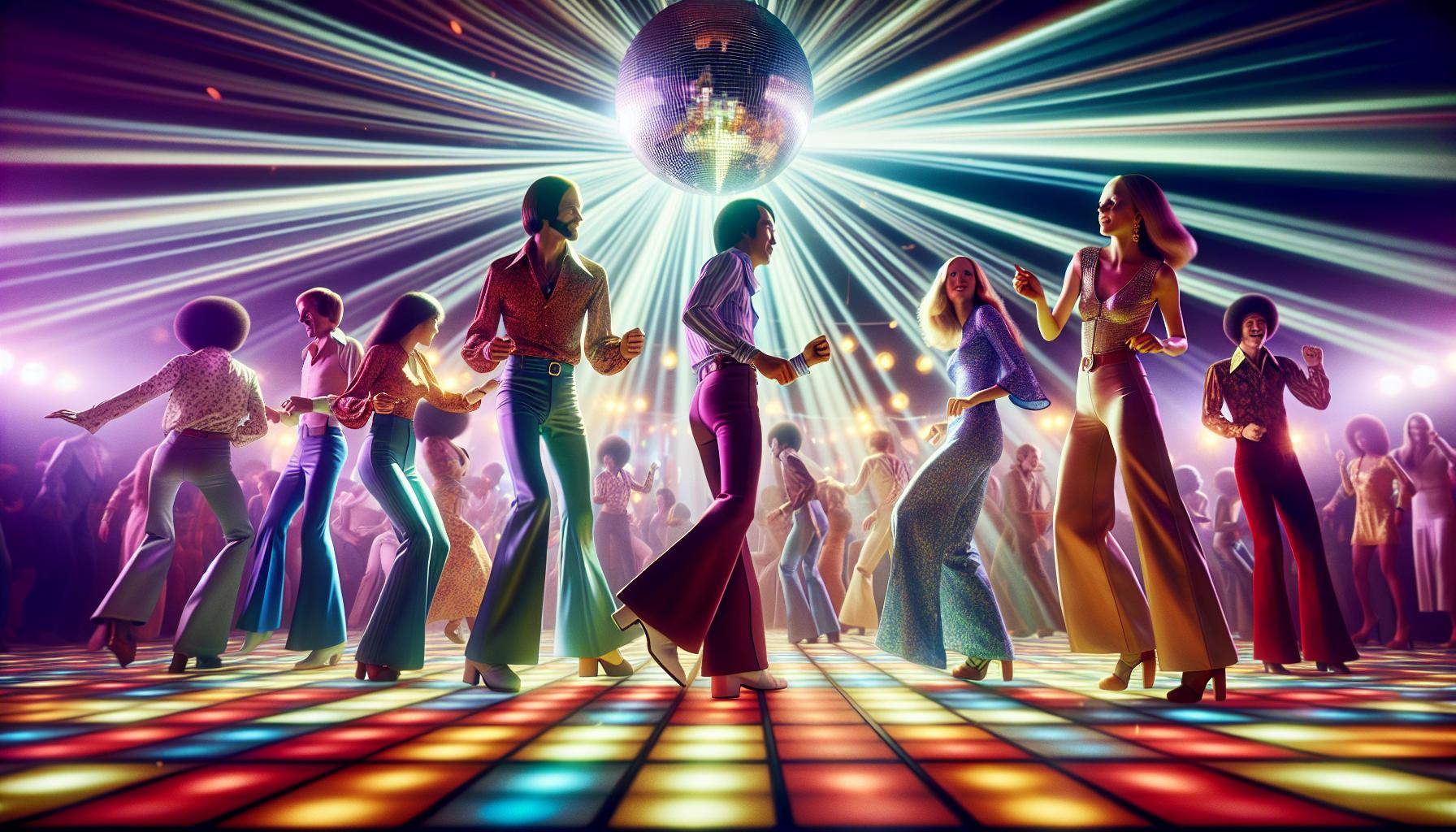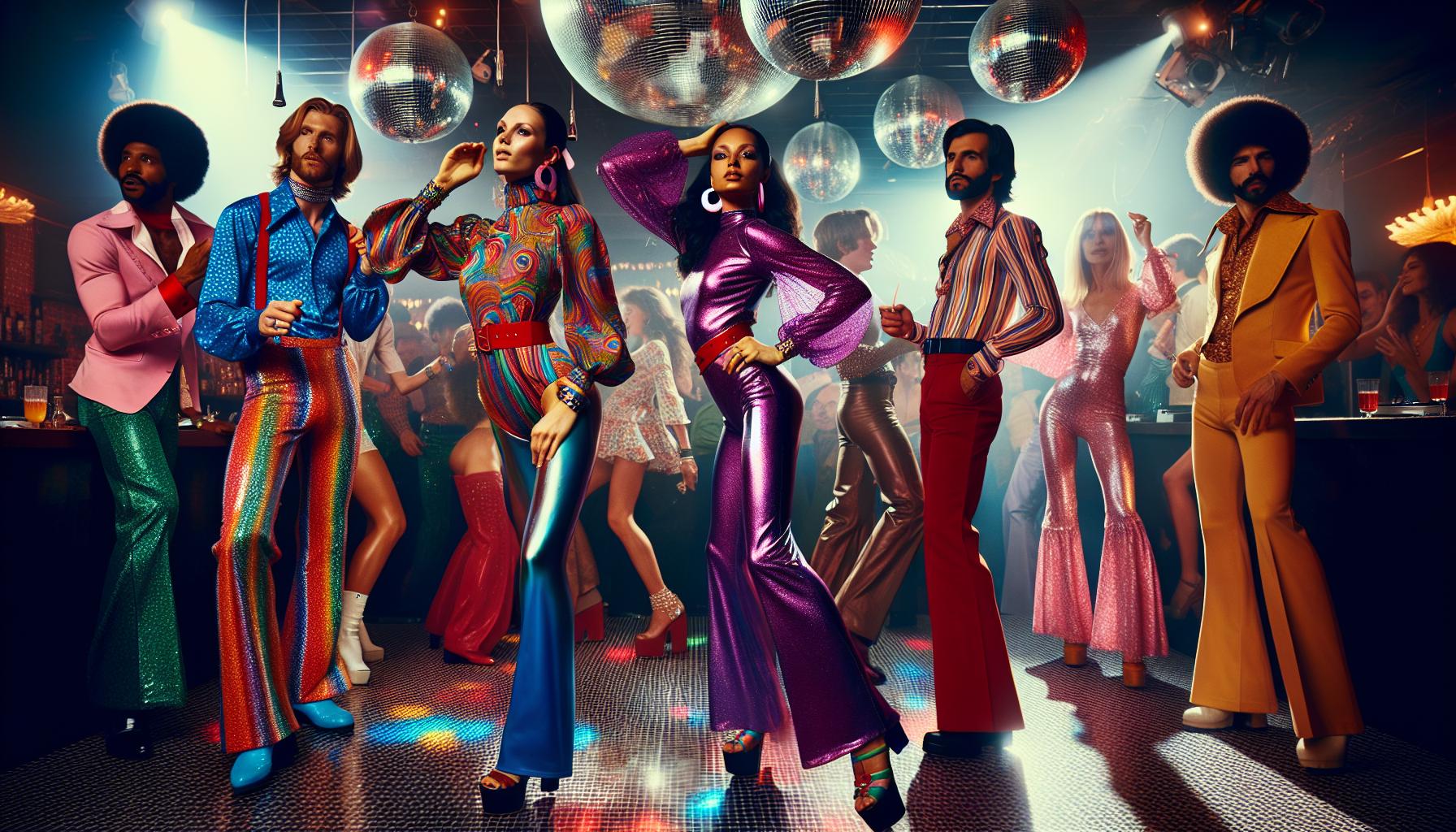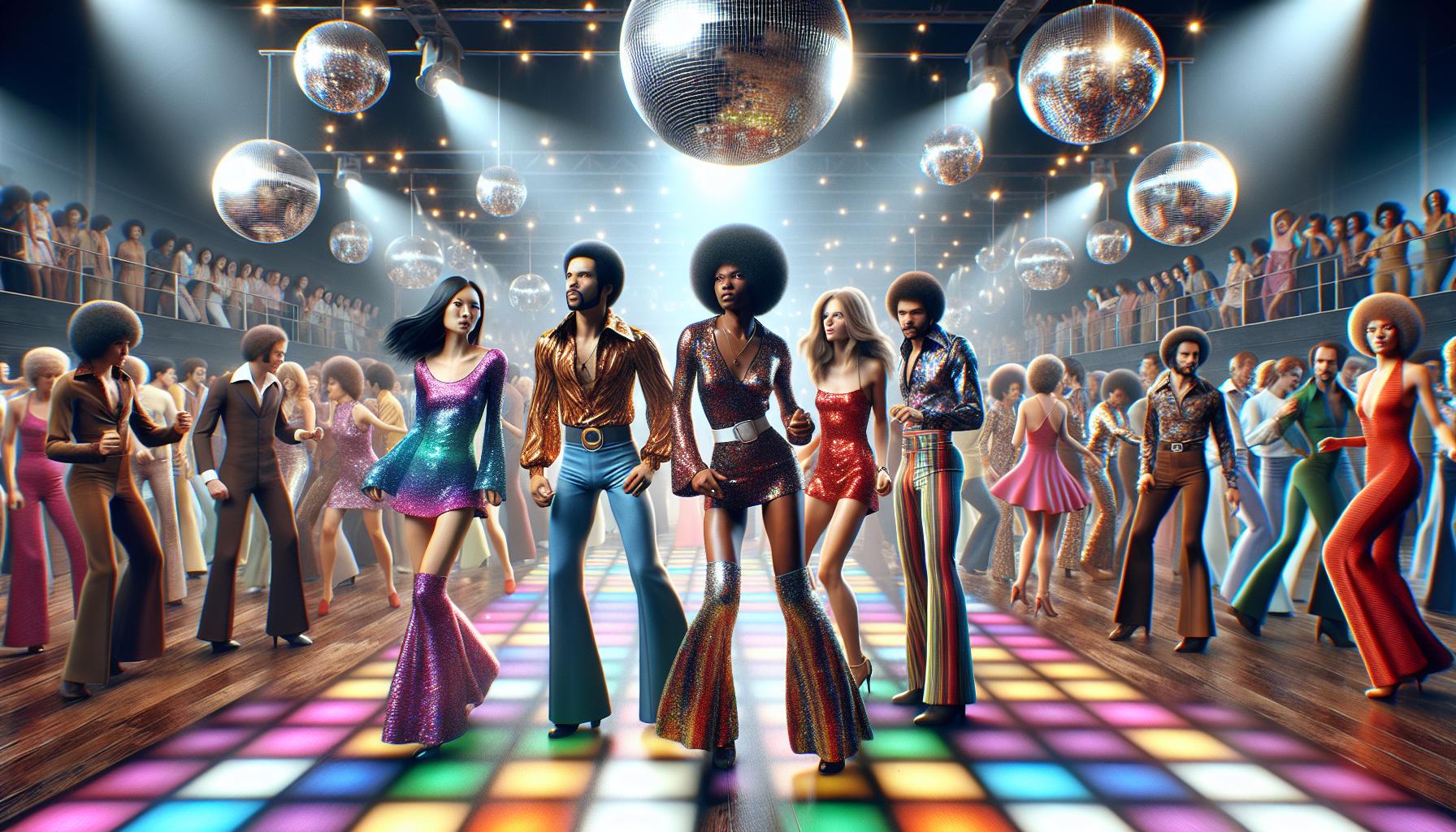Disco music emerged in the early 1970s, transforming the music scene and shaping a cultural revolution. With its infectious beats and vibrant energy, disco became a soundtrack for nightlife, dance clubs, and liberation. It brought together diverse communities, celebrating individuality and freedom of expression through rhythm and style.
As the genre exploded in popularity, iconic artists like Donna Summer and the Bee Gees took the stage, creating timeless hits that still resonate today. Disco wasn’t just about the music; it influenced fashion, dance, and even social movements, leaving an indelible mark on pop culture. Exploring the history of disco unveils a fascinating journey through sound, style, and the spirit of an era that continues to inspire generations.
Key Takeaways
- Origins and Evolution: Disco music emerged in the early 1970s, blending funk, soul, and pop, and became a significant form of expression centered around rhythm and dance.
- Cultural Impact: The disco scene provided a festive atmosphere that united diverse communities, fostering self-expression, acceptance, and empowerment, particularly within the LGBTQ+ community.
- Iconic Artists and Hits: Legendary artists like Donna Summer, the Bee Gees, and Gloria Gaynor created timeless tracks such as “Stayin’ Alive” and “I Will Survive,” which continue to resonate today.
- Fashion and Dance: Disco was characterized by bold fashion choices and energetic dance styles, with nightclubs serving as hubs for creative expression and social connection.
- Decline and Backlash: The late 1970s saw a decline in disco’s popularity due to changing musical trends and cultural reactions, leading to the infamous “Disco Sucks” movement.
- Modern Revival: Disco experienced a resurgence in the 1990s and continues to influence contemporary music, fashion, and culture, demonstrating its lasting legacy in modern entertainment.
Disco Music History
Disco music emerged in the early 1970s, blending elements from funk, soul, and pop. Influenced by the cultural landscape of the time, disco provided a new form of expression centered around rhythm and dance.
New York City became a pivotal hub for disco’s development, with nightlife venues like Studio 54 and The Loft playing significant roles. These clubs featured DJs who mixed records, creating a non-stop dance experience that captivated audiences.
Key artists contributed to disco’s rise, such as Gloria Gaynor and Chic, who produced anthems that defined the genre. Songs like “I Will Survive” and “Le Freak” showcased the empowering themes that resonated with fans.
The disco scene also intersected with the LGBTQ+ community, offering a safe haven for self-expression and acceptance. This cultural fusion amplified disco’s popularity, making it the soundtrack for diverse social gatherings.
Disco’s production methods revolutionized the music industry, with a focus on high-energy beats and lush orchestration. This innovative approach paved the way for future genres, blending technology with artistry to create unforgettable tracks.
The Rise of Disco in the 1970s

Disco surged in popularity during the 1970s, capturing the essence of a vibrant nightlife scene. This era highlighted groundbreaking artists and unforgettable tracks that defined disco’s dynamic sound.
Key Artists and Influences
Disco music drew from various genres, with influential artists shaping its landscape.
- Donna Summer: Known as the “Queen of Disco,” Summer’s hit “Love to Love You Baby” showcased seductive rhythms and smooth vocals, elevating dance music to new heights.
- The Bee Gees: Their falsetto harmonies contributed to blockbuster tracks like “Stayin’ Alive,” cementing their status as disco icons.
- Gloria Gaynor: Gaynor’s anthem “I Will Survive” became synonymous with empowerment, resonating deeply within the LGBTQ+ community and beyond.
- Chic: Pioneers of the disco sound, Chic’s “Le Freak” highlighted the importance of rhythm and groove, influencing future pop and dance artists.
These artists, along with numerous others, mixed influences from funk, soul, and pop, creating a sound that was both infectious and revolutionary.
Iconic Disco Hits
Disco produced classic tracks that became timeless anthems, captivating listeners across generations.
- “Stayin’ Alive” by The Bee Gees: This track epitomized the disco movement with its unmistakable beat and lyrical themes of survival.
- “I Will Survive” by Gloria Gaynor: Celebrated for its message of resilience, this song transformed into an empowerment anthem for many.
- “Le Freak” by Chic: The catchy chorus and danceable rhythm made it a staple in discos worldwide.
- “Last Dance” by Donna Summer: This song’s blend of emotions and danceability made it a perfect closing number in clubs.
These hits collectively defined the disco era, ensuring its musical footprint endured well beyond the 1970s.
Disco Culture and Nightclubs

Disco culture thrived in vibrant nightclubs, shaping social dynamics and uniting diverse groups. These venues provided spaces for self-expression, creativity, and connection, solidifying disco’s place in music history.
The Role of DJing
DJing became a crucial element of disco culture, transforming music delivery and audience engagement. DJs like Larry Levan and David Mancuso helped create unique soundscapes, mixing tracks and enhancing the live experience. They curated playlists that included disco, funk, and soul, keeping the dance floor energized. Techniques such as beatmatching and looping enabled seamless transitions between songs, making the dance experience immersive. The rise of disco DJs marked a shift in how music was consumed, laying the groundwork for modern electronic dance music practices.
Fashion and Dance Styles
Fashion and dance styles became integral to disco culture, reflecting its vibrant energy. Attendees embraced bold outfits, often featuring polyester fabrics, platform shoes, and flashy accessories. Disco’s fashion was characterized by bright colors and extravagant designs, encouraging individuals to express their uniqueness. Dance styles, such as the Hustle and the Bump, emerged as popular moves, emphasizing rhythm and freedom of movement. Nightclubs organized dance contests where performers showcased their skills, further embedding dance into the disco lifestyle. The combination of fashion and dance fostered a distinctive culture that remains influential in contemporary music scenes.
The Decline of Disco

The decline of disco music in the late 1970s marked a significant shift in the musical landscape. While disco thrived on dance floors, evolving trends and cultural reactions led to a downturn in its popularity. Following the peak years of 1976 to 1979, disco faced backlash from various factions, including rock enthusiasts and conservative critics.
The “Disco Sucks” movement emerged in 1979 as a protest against disco culture. This campaign culminated in a widely publicized event called “Disco Demolition Night,” where disco records were destroyed in a baseball stadium. The event symbolized the growing disdain for disco, contributing to its rapid decline in mainstream popularity.
The rise of new musical genres also influenced disco’s downward trajectory. The emergence of punk rock, new wave, and hip-hop captured audience attention, indicating a shift in musical preferences. Many discotheques transitioned to accommodate these new genres, leaving disco behind.
By the early 1980s, radio stations began reducing their disco playlists. Additionally, the recording industry shifted focus toward different styles. Notable artists who had once dominated the charts found it difficult to maintain their previous success, resulting in reduced visibility for disco music.
Despite its decline, disco’s impact on music and culture remains profound. Elements of disco surfaces in various genres, especially dance-pop and electronic music. Artists continue to draw inspiration from disco’s rhythmic grooves and production techniques, ensuring that its legacy endures in contemporary music.
Disco’s Revival and Influence on Modern Music
Disco music experienced a significant revival in the 1990s, influenced by its enduring appeal and resurgence within various music genres. Dance-pop emerged as a prominent style, incorporating disco’s infectious beats and melodic structures. Artists like Madonna, with tracks such as “Vogue,” and House music pioneers like Daft Punk rekindled disco’s spirit, merging it with contemporary sounds.
Disco’s impact extends beyond its direct revival. Elements of disco found compatibility with genres like hip-hop and electronic dance music (EDM). Modern producers often sample classic disco tracks to create a fresh sound, fostering a bridge between past and present influences. For example, Dua Lipa’s “Don’t Start Now” infuses disco’s rhythm and instrumentation, positioning it within today’s pop landscape.
Disco also remains influential in fashion and aesthetics, shaping trends in clothing and performance styles. Modern artists draw inspiration from disco’s vibrant visual culture, reviving bold colors, sequins, and flamboyant styles that characterize the disco era.
The renewed interest in disco is evident through revived events and themed nightclubs that celebrate its music and culture. Disco-themed parties attract diverse crowds, emphasizing the genre’s role in uniting communities for collective enjoyment and expression.
Disco’s influence reached the mainstream even in television and film, highlighted through soundtracks that celebrate disco songs. Series like “Stranger Things” and films like “Guardians of the Galaxy” incorporate disco tracks, introducing the genre to new audiences.
Disco music’s enduring legacy remains apparent in modern music creation and consumption, showcasing its timeless quality and cultural significance.
Disco music’s vibrant history is a testament to its cultural significance and enduring appeal. From its roots in the 1970s nightlife to its revival in modern music, disco has shaped the landscape of pop culture. The genre’s ability to unite diverse communities and celebrate individuality continues to resonate today.
As contemporary artists draw inspiration from disco’s infectious beats and bold aesthetics, its legacy thrives in new forms. Disco’s influence on fashion, dance, and social movements underscores its role as a catalyst for creativity and self-expression. This dynamic genre remains a powerful force in music, proving that its rhythm and spirit will never fade away.